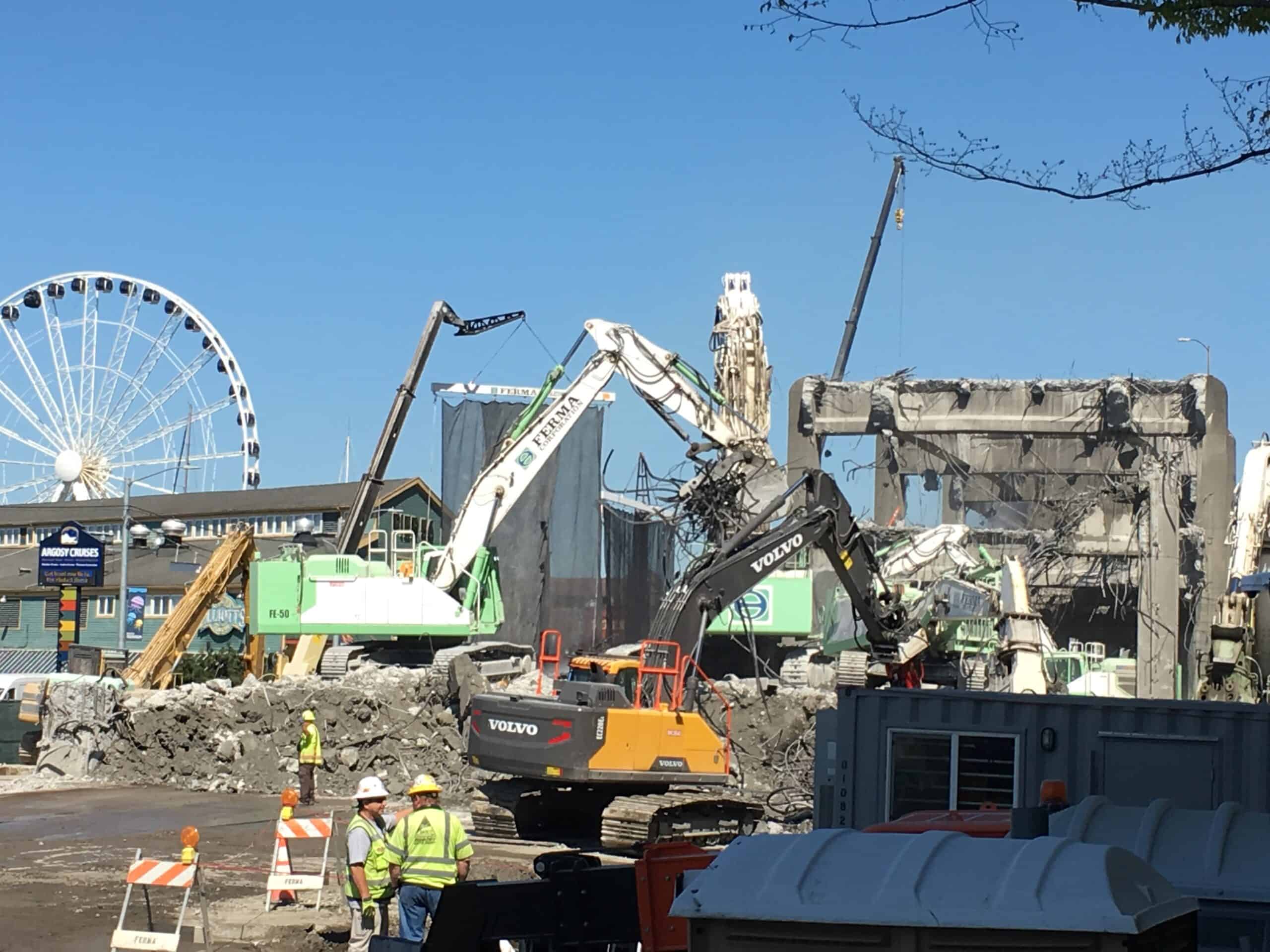Alaskan Way Viaduct Demolition – USA
Project summary
Images of the project
The Alaskan Way Viaduct Demolition
Sixense was in charge of instrumentation monitoring during construction of the Alaskan Way Viaduct (AWS) replacement tunnel, measuring 4,000 monitoring points throughout downtown Seattle in the span of four years. It was one of the most comprehensive and sensitive monitoring networks ever attempted in the United States.
After successfully completing this work, they were hired to monitor the final chapter for the Viaduct, its demolition.
Monitoring the Alaskan Way Viaduct Demolition
To monitor city utilities and structures in the vicinity of the teardown of the 2.2-mile-long double-decker highway, which had dominated the Seattle waterfront for over 65 years, Sixense was hired for risk management services.
Calculations made at an earlier stage (risk assessment) demonstrated the vibrations generated by the required heavy machinery, and the falling of large concrete bridge pieces might be critical in comparison with the defined specifications. Trial tests were performed by Sixense to refine these calculations, quantify the impact, and prove the effectiveness of anticipated mitigation measures.
A monitoring plan was implemented by Sixense with recommendations based on their findings and international standards from their experience and database. Sixense offered a long-term unattended monitoring system. Seventeen vibration monitors were used to monitor the Alaskan Way Viaduct Demolition and subsequent filling of the Battery Street Tunnel with demolition debris.
The Battery Street Tunnel
The Battery Street Tunnel (BST) was added to the Sixense original contract. On the same roadway as the viaduct, the tunnel was to be filled with crushed concrete from the pulverized viaduct demolition. The concrete was spread with machinery and compacted with vibratory rollers below the bottom of the girders in the BST, which was suspected to generate significant levels of vibration to infrastructure and adjacent structures. As per the specifications of the contract, Kiewit (the General Contractor) needed to control the vibration impact on this type of utility, especially since water mains cross the BTS at six different locations.
Sixense monitored utilities and walls in the tunnel while the work occurred. The purpose of Sixense’s monitoring was to ensure that vibration triggers were respected and water pipes were monitored continuously while filling and compacting in their direct vicinity.
Project Conclusion
Demolition work was completed on the decommissioned Seattle Viaduct in November 2019. The Battery Street Tunnel was eventually sealed off and is no longer in use. WSDOT says an estimated 240 million pounds of concrete, and more than 15 million pounds of steel rebar found a new life as infill.
Sixense Northern America provided invaluable expertise and specialized services to protect nearby utilities, structures, and buildings during the Alaskan Way Viaduct demolition.
